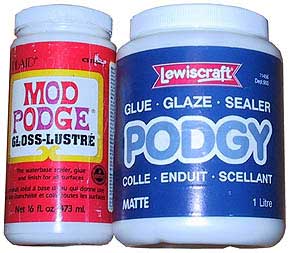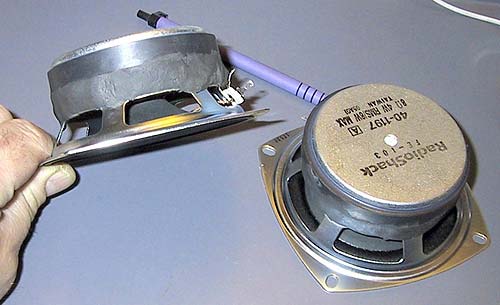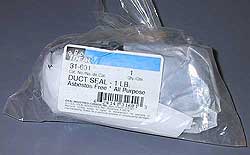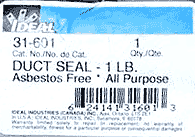| Speaker Tweaks updated 05-nov-07 |
||||||||||
|
|
||||||||||
| Puzzlecoat Puzzlecoat is a brand name from when we started this, i haven't been able to find this brand in the last 5 years, but the name stuck because it is very descriptive -- it is more commonly used to coat assembled puzzles before framing them. Classified as a "decoupage sealer and adhesive". This stuff is a PVA compound very similar to white wood glue. Same smell, same color, a little thinner, and is more flexible when it dries. There are two kinds i have used of late -- Mod-Podge and Lewiscraft Podgy. Both are available in shiny & matte. I expect there are many clones of this*. Try a craft store. It is fairly cheap. 30+ years of using this trick on paper cone woofers & mids. It consistently gives a better sounding speaker (caveat -- too much can roll off the top end of the driver too much). |
|
|||||||||
|
The theory we have built up is that:
Warning: This mod is not reversible. Use at your own discretion/risk. I apply it with a paintbrush -- i have a range of artist brushes in various sizes for different jobs. I ususally start with a thin coat, then use a bit more in subsequent coats. Usually more coats on the front than on the back (sometimes no coats on the back). You can use too much -- i have a pair of Eminance 15" co-axials that i now need to add a midrange to ... I have used it on all manner of drivers. Bass drivers, mids, mid-basses, even dome mids, and paper cone tweeters. I used one thin coat to clean up the MCM 55-1855 Aluminum mid-basses. These 12s have been generously treated. * It is also useful to stiffen & damp other things too. One coorespondant in England coated (inside & out) the heavy cardboard tubes used as mid enclosures in his TLS80s and noted a very noticable improvement.
Podgy -- Lewiscraft, Toronto, ON, Canada At least one other on-line source is Craftopia, but a search on the internet turned up references all over Europe (particularily in Germany) & North America. |
||||||||||
|
Duct-Seal
|
|
|||||||||
|
[ <-- Back to T-Line Speakers | Design ] |
||||||||||



